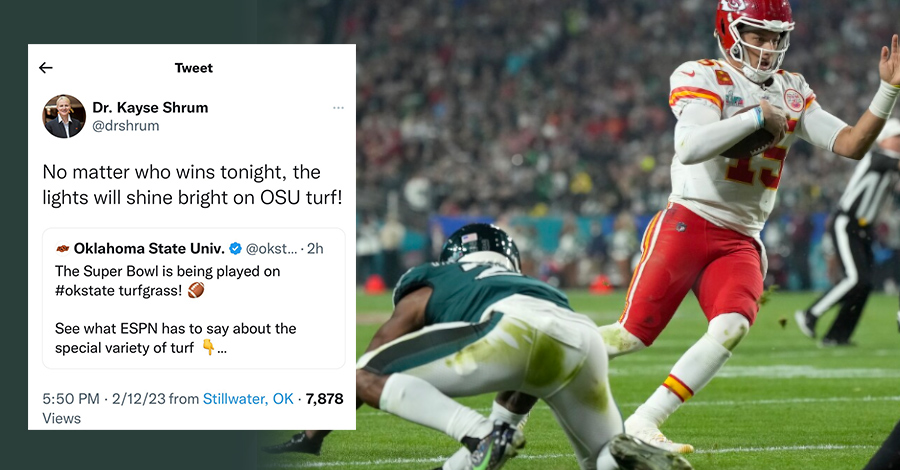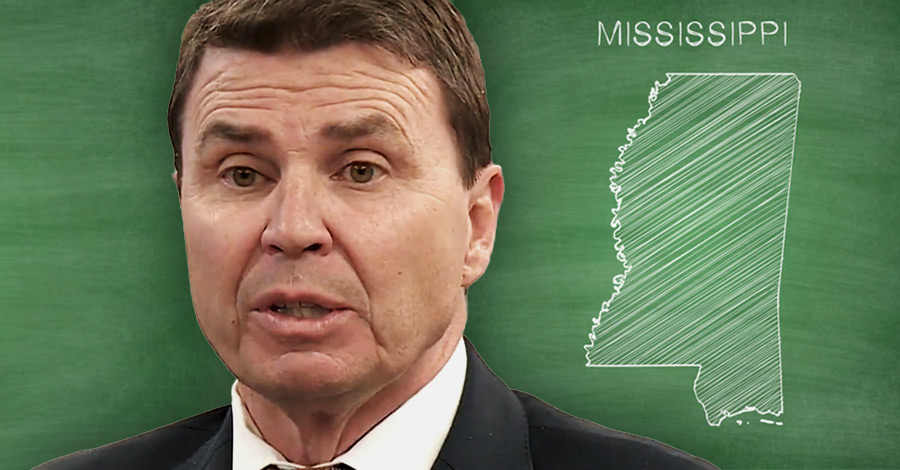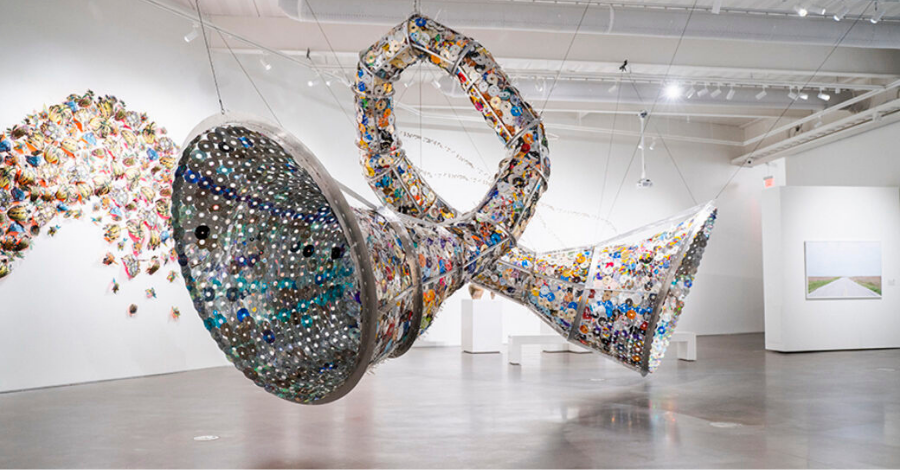Following Sunday night’s Super Bowl, the three big questions people were asking the next morning were:
1. Did the officials cost the Eagles the game with a late defensive holding call?
2. Is Rihanna pregnant or just really bloated?
3. Who do we blame for that stupid slippery field?!
The answers to questions one and two are “not really” and “both.” The answer to #3 is hysterically Oklahoma State University:
The Super Bowl is being played on #okstate turfgrass! 🏈
— Oklahoma State Univ. (@okstate) February 12, 2023
See what ESPN has to say about the special variety of turf 👇https://t.co/AP99GgHxA1
Super Bowl LVII will be played on a base of Tahoma 31 bermudagrass, an @okstate-developed turf variety.
— OSU DASNR (@okstate_ag) February 8, 2023
This is just one way @OSUResearch honors the land-grant mission, according to Thomas G. Coon, vice president and dean of OSU Agriculture. @OKstateHORTLA pic.twitter.com/5LzlrLuKhg
Yep, what was supposed to be a point of national pride for America’s brightest shade of orange became an international embarrassment, as the grass OSU developed for the NFL wilted under pressure and turned the field at State Farm Stadium into the world’s largest and most expensive slip and slide.
Seriously, just check out all the headlines:
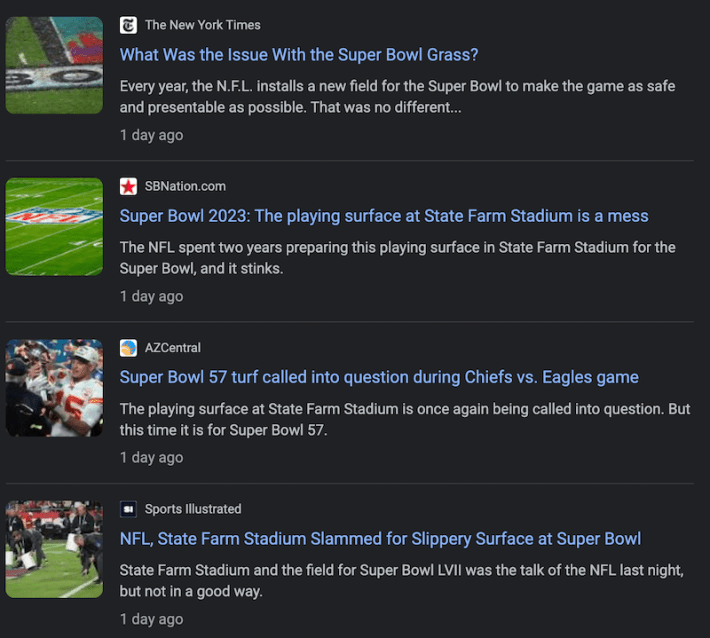
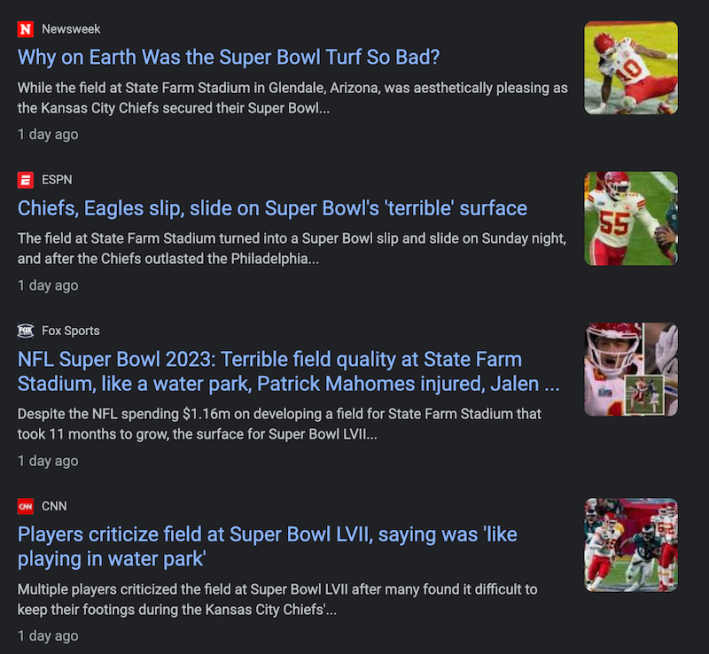
Yikes, that’s pretty embarrassing. I guess OSU President Dr. Shrum was a little too right when she said the lights would shine bright on the OSU turf!
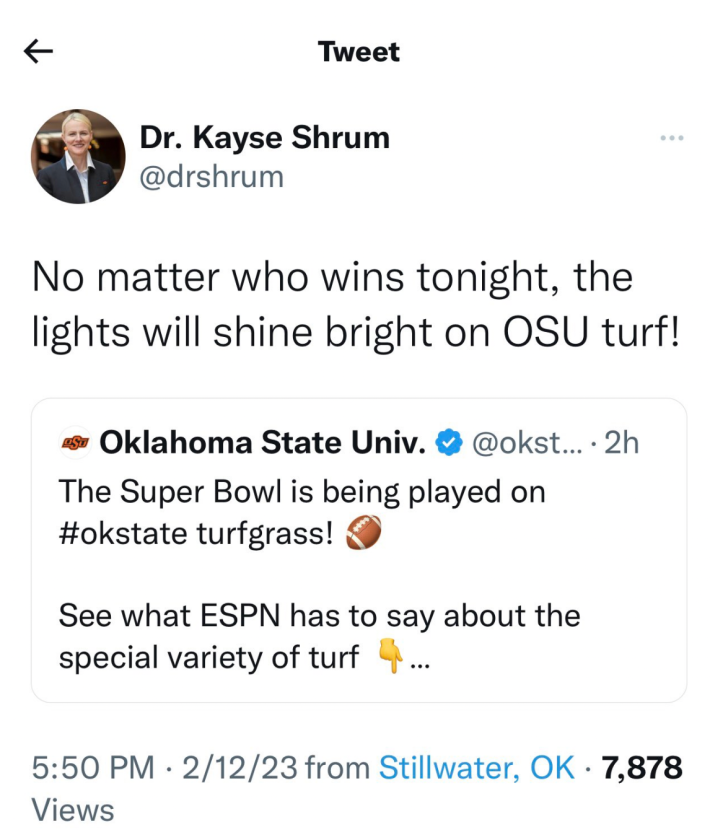
Perhaps startled by her prognostication skills, Dr. Shrum would eventually delete her tweet, and in the process, confirm to the world that the only grass-growing advice you should take from an Oklahoman should involve the types you can smoke.
With the world mocking the university’s grass, OSU is now throwing out more excuses than Mike Gundy following another Bedlam loss. The official university stance seems to mirror that of an alcoholic – they’re blaming rye.
Via The Stillwater News Press:
On Monday, the university clarified that it was not responsible for the field-created problems.
“While OSU scientists developed and patented Tahoma 31, they had no role in creating or preparing the field for Super Bowl LVII,” the university said in a statement to the News Press. “Tahoma 31 was used for the base layer, but the field also was seeded with a top layer of ryegrass, which has slick leaf surfaces when damp. That and other factors may have contributed to traction issues during play.”
Tahoma 31 was developed under Yanqi Wu at OSU. The process began in 2006, and the hybrid grass was tested across the country before its implementation in 2017.
“I don’t know,” Wu replied on one Twitter thread asking for his opinion. “The grass has been tested in more than 250 environments.”
I love making fun of OSU, but I kind of feel bad for Mr. Wu. He was obviously proud of his grass and spent a lot of time on it, and – even if rye was involved – it must have hurt to watch it fail in front of billions of eyeballs.
Hopefully, he and OSU figure out the literal root cause of the issue and the grass continues to grow and expand across world, and doesn’t wilt into America’s saddest shade of orange.
Stay with The Lost Ogle. We'll keep you advised.
